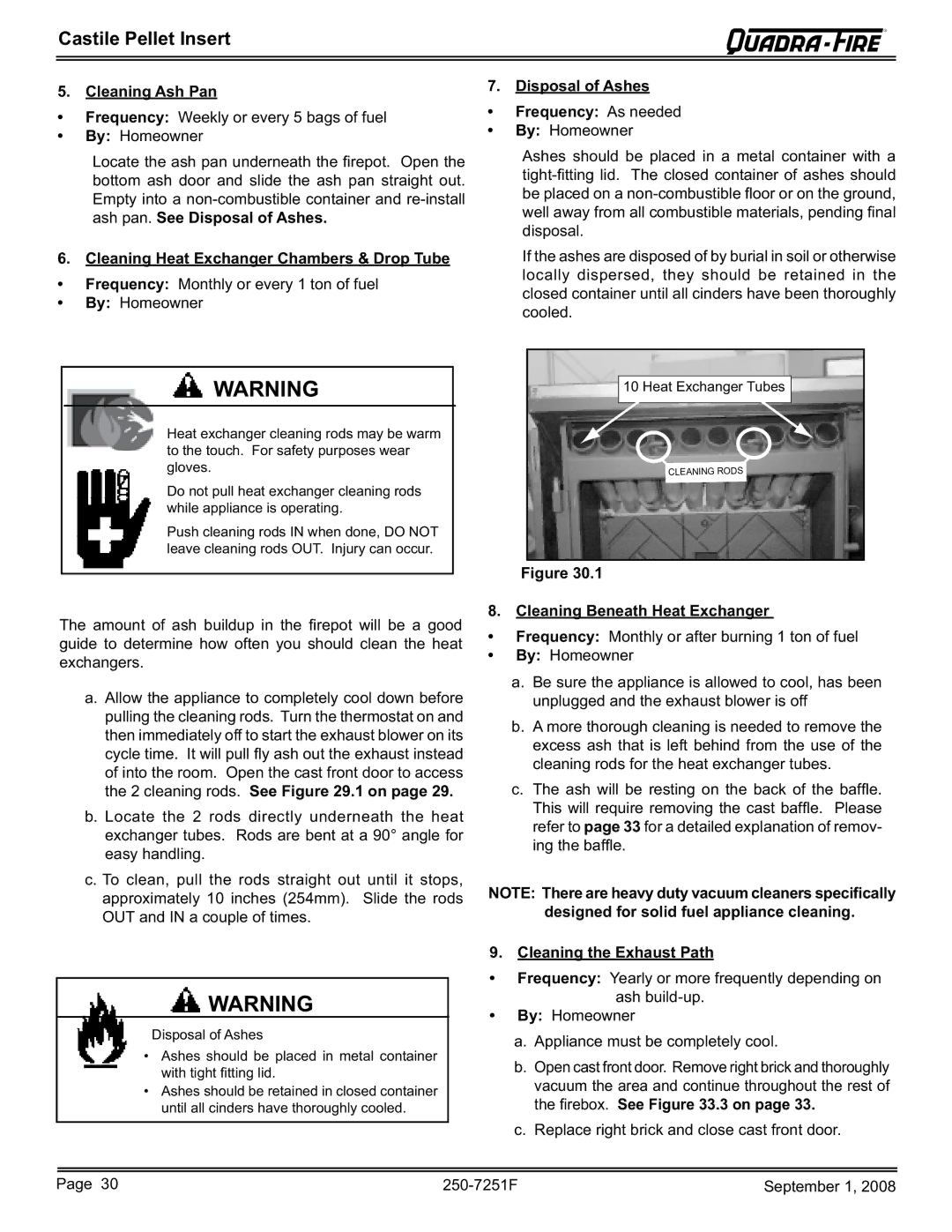CASTINS-CWL, CASTINS-CSB, 810-03201 (PMH), 810-02901 (MBK) specifications
Hearth and Home Technologies has made a significant mark in the hearth and home industry with a variety of innovative products, including models like the 810-02901 (MBK), 810-03201 (PMH), CASTINS-CSB, and CASTINS-CWL. These models reflect state-of-the-art design and engineering, ensuring comfort and efficiency in residential heating solutions.The 810-02901 (MBK) model is designed primarily for modular design, allowing for easy installation and integration into various home architectures. This model features advanced combustion technology that maximizes fuel efficiency while minimizing emissions. It is equipped with an innovative air control system that provides users with precise control over flame height and heat output, enhancing the overall user experience. With features such as a large viewing area, the MBK model provides an attractive look while ensuring optimum safety.
The 810-03201 (PMH) model offers versatile heating options and an elegant design that fits seamlessly into modern interiors. This model is notable for its user-friendly interface, which enables users to control settings with ease. It also has a remarkable heat distribution system, allowing warmth to spread evenly throughout the space, reducing cold spots and enhancing comfort. Additionally, the PMH model is built with durable materials that withstand the test of time, making it a long-lasting investment for homeowners.
The CASTINS-CSB and CASTINS-CWL models represent the pinnacle of contemporary fireplace design with their cast iron construction, enhancing durability and offering superior heat retention. Both models feature intricate designs that not only elevate the aesthetic of any room but also provide effective heating solutions. With the CASTINS series, Hearth and Home Technologies emphasizes the importance of safety with features such as heat shields and advanced flue systems that ensure proper ventilation.
In summary, Hearth and Home Technologies' 810-02901 (MBK), 810-03201 (PMH), CASTINS-CSB, and CASTINS-CWL models are characterized by their innovative technology, elegant design, and efficient heating capabilities. These models cater to a variety of homeowner needs, providing comfort, efficiency, and safety while enhancing interior aesthetics. Whether you’re looking for a robust heating solution or an elegant focal point in your home, Hearth and Home Technologies offers durable and stylish options that stand out in any environment.

